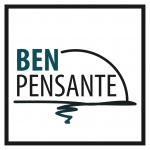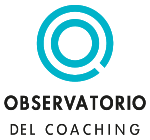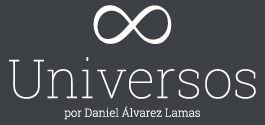Interview of Eva Wieprecht and Judy DeLozier
Eva: Judy, you were part of the original peer group of NLP (the famous Wednesday meetings) and you are one of the most important co-developers in the NLP field. Tell me a little bit about the days in the beginning of NLP. What was the spirit, the beginning of NLP like?
Judith DeLozier: I was a student at UCSC. I had been a friend of Leslie Cameron for quite some time. We worked together in a restaurant as university students. It was in the early 70s as I joined the famous wednesday evenings we created games with colored pieces of paper to find out if a group was more visual by nature or a group was more auditory by nature and so on.
That was also the time John asked me out on a date. We were then together the next 15 years. Right after we first started dating John gave me „The Structure of Magic“ the book which was a manustcript, it was not yet published. But it was getting ready to get published by Science Behavior Books.
I was in religious studies (comparative religion) and anthropology sort of as a combined major with the emphasis on the religion aspect and John asked me to read this manuscript and tell him what I thought about it. I read the book and I went, wow, you’re going to be really able to help people achieve what they could have not achieved. It gave such a wonderful skeleton structure to sort of hang experiences on that you were not able to make sense out of and really find a way to get those in the system in an intergrated way. I did not talk about it that way but i thought this is going to help people really to release potential into the world. Release potential in a generative way.
My natrual space was always more in the solution space. How can we use this in order to change the world in a positive way or change ourselves, release potential? That is how I came to NLP and then John and I were in a relationship for a long time so I was with John when John and Richard went to study with Milton Erickson. I went shortly after there myself and I really got the idea of modeling and got the idea of representational systems and Meta Model, understanding the Milton Model as sort of the opposite in a way. To generate freedom in communication where I am allowed to participate at the deepest level where on the other hand the Meta Model came about to become more and more explicit about my own world. And I was there early enough to be honored in the NLP Volume one, you know. Then John and Richard asked me to do the tracking model in the the second Volume, Patterns of Hypnosis with Milton Erickson, which was [about] how did the use of representational systems facilitate people going kind of inside to explore their world. And it sort of went off from there.
Eva: You happened to meet Milton Erickson and Virginia Satir, what was your introduction to them like? How was it being in their presense and studying with them?
Judith DeLozier: I only had an opportunity to spend a very small amount of time with Virginia. She came while John and Richard and she were writing the book Changing with Family. She came up to our house where we all lived in a little commune. She was a big woman and I am not so big and I remember her hugging me and so I was right in her breasts, you know, and I thought, „mama, this is mama“. She was incredibly kind, strong and very, very loving and very, very committed to what she did in terms of helping families. And, I can remember that sense of real compassion for the pain and the suffering that was going on in families and that it did not have to be that way. And, I think she was also a leader, I had the feeling very much the same with Milton Erickson and Gregory Batson.
With Milton I had the opportunity to spend much more time. And he was the most sophisticated communicator that I have ever met. I do believe Stephen Gilligan has taken that beyond but really standing on his shoulders. Certainly, he was one of the models in NLP. He was also one of the most amazing taskers. Really had that amazing sensibility, to kind of go, if I gave that person this task, if they can accomplish that task somewhere in the task it presupposes that the person is doing what they say they cannot do. And, I remember thinking of it like in ballet. When you get ready to do a performance and the teacher wants to have a good double pirouette she says, „we’re gonna use a triple so everybody focus on that!“ Which presupposes the double, what you really want is a quality double.
I remember one time I was in Milton’s house and he started giving me tasks. So the first one was, „can you find any mushrooms in this room?“. Of course, I started looking around and on this little shelf I found this little nicknack thing made out of stone. He said, „that’s right, do you know what kind of stone this is?“ Oddly enough, god knows why, but two weeks before that, somebody had given me one of those stones. It is a Petoskey stone. So not many people know what a Petoskey stone is. That really impressed him. Then he goes, „Betty“ –his wife Betty- „bring that other stone that I just got“. [Betty answers], „Yes, Milton“, so Betty brings this other stone. God forbid, a week before, my friend Robert Dilts had given me a stone like that and it was a dinosaur gizzard stone. Well by then, he was very impressed with my ability with stones. But it was so much fun you could just see the amazing joy that he was taking in figuring the task out, presenting the task, noticing how you were thinking and searching, solving, that gave him such amazing joy. He talked [about] how he did it with his grand children and so forth and so on. Anyways, I have great amazing memories of Milton.
Eva: What was the greatest gift that Milton brought into the modeling space of NLP?
Judith DeLozier: Utilization and accepting anything that’s there. You know, you are going to accept the behavior that’s there, utilizing whatever [it] is and finding a way to use that and bringing that into the pathway of healing. Awareness and connection.
Eva: And what about Virginia Satir, what was her greatest gift to the field of NLP?
Judith DeLozier: The beginning of the real systemic thinking. On one hand, sort of, the bigger picture and there was also the aspect of the postures. I think that was one of the early click points as the kinesthetic, as a representational system. It was not developed much but it was there and it was utilized from time to time.
Eva: What was the spirit of the time as NLP got developed?
Judith DeLozier: The best words I could use, it was incredibly generative. It was a lot of people just so curious, a lot of people willing to not know. To just go, let’s see what unfolds, let’s really lead with experience NLP was called the study of subjective experience before it was called Neuro Linguistic Programming, and that was the appropriate name for what it was. Let’s lead with the experience, let’s act as if and then explore through our own experiences, the structure of our own subjective experiences and find the patterns that connect us as human beings. To me it was curiosity, the willingness to explore the subjectiveness of my experiences without fear but with curiosity and generatively. There was also a lot of healing going on. There were also some really hysterical things going on. I remember through the period of time – and this could have been actually around the Virginia Satir time- with the Meta Model and the Milton Model there was the focus on language and within that space we asked what is this funny little thing that we call idioms? Because idioms are computed in both hemispheres of the brain, that’s what makes them so interesting. So in the United States, if a person dies you say, „he kicked the bucket“. Well, you cannot say, „he kicked the green bucket“ because it only has one meaning. But when you say, „he kicked the bucket“ there is the literal meaning and the metaphorical meaning. So, we got really interested in these idioms. So, if a person was having a difficult relationship and saying, „it is like my hands are tied“ it has the literal meaning „my hands are tied“ and it also has the metaphorical meaning [that] there is nothing I can do, it is hopeless and helpless. So, we would tie their hands and allow them to kind of work their way out of that and, of course, it becomes methaphoric for literally working your way out but through the metaphor. Find your way out of it through the body. I remember one time the guy goes, „all the people are so angry at me, I feel like I stand there and I am being crucified“, so, they crucified this poor guy. You know literally put him up there and told him you got to put yourself down. Or, a person said, „it like beeing ripped apart“. So, they would grab him by both arms and so they [the person] had to work their body work through that. So, other people were seeing that from the outside and thinking, „holy canoly, what the hell is going on there?“ But that was part of it, people where willing to explore that subjective experience and find out what happens if I do that.
Eva: What is your contribution in the field of NLP from your perspective?
Judith DeLozier: I think there are several. One is community. I think that has been something I have championed. Certainly, all the time John and I were together I was bringing African dancing and drumming into NLP as a pathway for people to have multiple and alternate descriptions and as a practice of integration, as a practice of joy, as a socializing dance, you know. Dancing together and making music together. But doing it as a group that is also telling a story in that dance because dancers from Africa are ritualistic and they are punctuating ritual and changes in people’s lives. It started off a whole process in NLP, you know. The whole idea related to community, how do we create community, how do we bring in functions and activities that have the effect of bringing people closer and closer together.
I think another of my contributions might be in the area of cross cultural relationships. My background was in comparative religion and anthropology so I was always very interested in ,sort of, that human experience.
Not the differences in languages but what was that thing that happenes in all humanity where we are trying to describe that which is not describable through other descriptions like science and that we call sacred. To me, rituals have always been a great fascination. I remember one time asking Mary Catherine Bateson, who was Gregory Bateson’s daughter, a question. I had an opportunity to pick her up from the airport once, along with Lara Ewing, who is one of these fabulous women involved in NLP for a very long time, the three of us were driving back to Lara’s house. So I thought what a great opportunity, I am going to ask her about this idea of wisdom. Because Mary Catherine’s father said: „wisdom comes out of this idea of multiple descriptions“. Right, being able to look at things from different perspectives and that wisdom or truth, kind of, comes out of that space in between. And, the idea that it takes two to know one. So, I asked her, you know, „What do you think of the idea of wisdom, Mary Catherine?“. And, I talked about the perceptual positions and the different perspectives. Then she said, „Oh, that’s what my dad would say“. So, I thought, hmmmm, I wonder what she has to say. And interestingly enough, she said, „Wisdom comes out of ritual“. And, she gave a beautiful example of what she meant by telling me a story.
Now, I’ll pass the story on to you. A friend of hers had a daughter. Next door to the daughter, a family moved in and the family was from Central America. It was a multigenerational house. There was the grandmother, the parents and the children. One of the children was the same age as the girl next door, like young teenagers. So they got to be very good friends. It was obvious that this grandmother and the grandson had a very close connecton. Having, kind of, come from another country the grandma every day would strip herself to the waist – kind of privately, in the back of the yard- and she would bathe. Well, a horrible thing happenend. The grandson got killed in a motorcycle accident and it was very traumatic. Grandma quit eating, grandma quit communicating, Grandma quit moving. She just sat in her chair and was obviously in great grief and pain. Nobody could get through to grandma, no one of the family. And the girl from next door went over one day and took her by the hand and said: „let’s go wash“. She took her outside and they both stripped down the clothes and bathed.
And so, Mary Catherine was talking about the wisdom that came through that ritual. And I think that is probably a little bit of my spirit in NLP, as well. The sort of desire for people to move away from the idea of a technique and instead, ask yourself…how do I make this a ritual between the two of us so that it becomes a pathway for the sacred?
A third aspect is the body. The body as a real represenational system. Again, that started back with the African dance because you could tell if they danced at the end of the day of drumming, at the end of the day they were integrating in a kind of very natrual way. And, that has continued to grow in NLP in terms of the body as a real representational system. Not just as the holder of emotion but really honoring the body as the holder of the history. The body is the historian. It holds, it codes and decodes knowledge, it has memory, it is other than the conscious intellect, you know, it is. It is the psychology, it holds the logic of relationship and not just the logic of the conscious mind or the intellect. And, it is a different kind of logic and that was probably the most important thing I learned from Gregory Batson, to go, there is logic as we know it comes through the Greeks, there is psychologic which is the logic of the soul and the heart, the logic of the soul really because it is the logic of the psychy and those are two different related parts of the human. And, I think also, the fact that he really understood that how we describe things that there is that loop. So, even if we describe conscious and unconscious starts to create in our thinking that split, that is obviously not really there, because it is an integrated system but then we begin to act is if that’s true and then we begin to create that difference inside of us that that relationship is there. Maybe the better description is unit of mind. That it is a unit. So I think, things like that that I learned form Gregory have absolutely continued to live and bring more and more of that in. Even in the 3rd generation of NLP, there is still a part of me that is not very sympathetic to go, mind/intellect, body, field because they are inseparable except through language.
Eva: Robert and you are talking about the 3rd Generation of NLP. What specifically is related to the 3rd Generation of NLP?
Judith DeLozier: I think one of the things of the 3rd Generation, at least from my perspective, is that it is revisiting the past. Taking some seeds that were in the past and that had been slowly growing in their various ways through the years and brought some of those things to maturity.
I think metaphors, symbology and arts and poetry, the artistry, the aesthetics, movement, the proccess of metaphor, movements like the 5 Rhythms, the metaphor proccess like the hero’s journey. You know, states have always been part of NLP from the very beginning. Having positive states and states that are not -by our own judgement-. The beginning was about putting pieces back together. That’s where NLP started. To kind of get congruent. I was looking at it a little bit different, to me it was going, how about living in congruency and noticing when I get pulled away. Not as [if] you are trying to chase congruency, [but realizing that] it is an act of will to choose, and from there I can really learn because I can notice when I get pulled away. And then, I have new things to integrate as I learned that. Then it got moved to state alignment, right? It had more to do with having your turtles in a row. It was not necessarily about integrating but can I get everything into an aligned space? – Like turtles all the way down – And now in the 3rd Generation we have state but now it is about state, it is about my zone, it is about being centered, it is about being in the flow. So it is [that] the state is always there but sort of the focus of attention around it is different, you know. And I think it was that feeling all along that was always for me kind of hooking into the eastern philosophy, which now is really showing up. People go centered and flowing and rock and river has been a part of eatsern philosophy [for] 5000 years probably, I dont know? So, you can kind of feel that.
So, I think multiple perspectives was something in the first generation we only talked about it through the Meta Model. Well, there is the referential index of George and there is the referential index of Mary, what happens if they switch referential indexes? It kind of was implicit or explicit in Fritz Perls work, right: „Sit in your mother’s chair and tell it through yourself“. Change these chairs but we were talking about it linguistically but also Fritz Perls was influencing that. Then, it was not until the second generation with Gregory Batson and then the idea of it takes two to really know one. If you cover one eye you lose depth but if you see something through two perspectives in a way and they converge it gives you a new level of depth, that’s where depth perception comes from even in our vision. Well, because we added the 3rd component which was kind of the Meta Position, that space, that was sort of the blossoming of the perceptual Positions. That continues to expand now in the 3rd Generation with what is the 4th Position, what is the field Position where I connect into the sense of the whole field or system. So, all the seeds are there, all of the time but it is just a question of how it is expanding and bringing more and more the system forward. That’s at least how I think about it.
Eva: I have to share with you that I personally got interested in NLP because I saw you at NLPU, I experieced your teaching and you as a person and you became a role model for me. NLP represented a possible pathway for me for greater awareness, a pathway for personal growth and greater wholeness as a person.
Judith DeLozier: Thanks. Yeah, Eva when you said that I really appreciated that in you because when you said that I went, maybe that is one of the big shadow [aspects] of NLP from my perspective, and you said it in a better way, which is, NLP is a model and models by definition have limitations. NLP happens to be a good model because you can model with it and because it is on the level of form and not content. We have not yet found the edge so much maybe. But if I use NLP to limit myself then I have missed the whole point. As soon as I go, well I am a visual or that’s my Meta Program, that’s just who I am, then, I go, they use something that should be about freeing to limit their world.
Eva: Thank you Judy.
Judith DeLozier is an original co-developer in the field of NLP and has made fundamental contributions to the development of many of the core NLP models and processes. In her 30 years of training and working with NLP all over the world she has particularly championed ideas that relate to culture, community, personal congruence and trans-cultural skills. Her work over the years has mostly focused on systemic and relational approaches. Judith’s educational background is originally in anthropology and religious studies. However, it was through her love of dance (ballet and Congolese) that led her to promote movement and the body as a primary tool in NLP – which lead to the creation of Somatic Syntax with Robert Dilts. She is the co-author of Turtles All the Way Down (with John Grinder) and the Encyclopedia of NLP (with Robert Dilts.)
* Interview of Eva Wieprecht and Judy DeLozier for the Coaching Magazin






